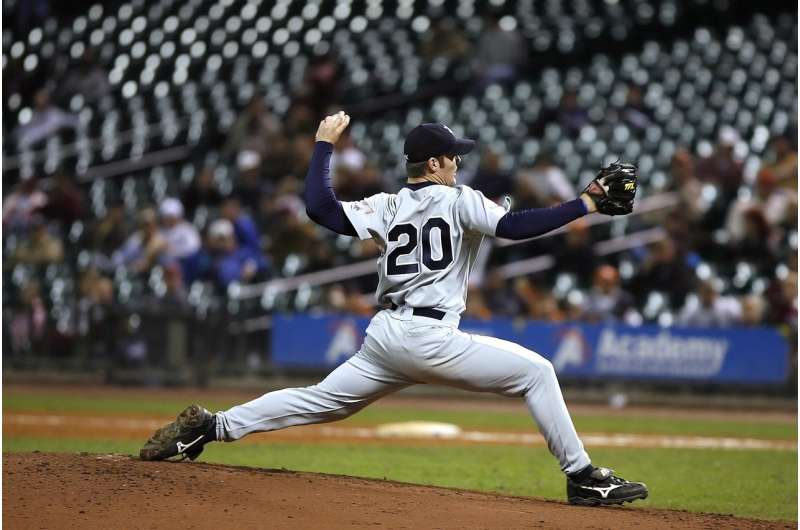The short, tumultuous working life of a major league baseball pitcher

There are pitchers in Major League Baseball (MLB) who have had 30-year careers, but as UC Riverside demographer David Swanson points out, these are extreme outliers and often the stars of the game who receive most of the media's attention. The reality for most pitchers in baseball is that their professional working lives are surprisingly short—3.99 years on average—according to a new method of calculating working life expectancies.
Estimating working life expectancies, or "life tables," particularly in sports, is seen as such a labor-intensive, detail-grinding task that demographers and statisticians have tended to avoid doing it. The result is a dearth of information about MLB career length, despite an abundance of historical data. Swanson, Jack Baker, Jeff Tayman, and Lucky Tedrow set to remedy this by showing that calculating life tables is actually quite easy if you use cohort change ratios. And using cohort change ratios allowed them to make forecasts with the same data they used for looking at working life expectancy.
"We used pitchers in the 1980–1981 season because that gave almost everyone enough time to finish their careers," says Swanson. "But we excluded those who had interrupted careers, such as those who played for a bit but might have been sent back down to the minor leagues for more training or because of injury. We wanted to look only at uninterrupted careers in the MLB, and it turns out that, on average, they're really short."
"It may be that there's so much competition to get into the Major Leagues that we end up with a lot of injuries," says Swanson. "A lifetime of baseball has gone into getting to that point. One thing we discovered by testing our analysis of 1980–1981 with a forecast for 1982 is that there is a huge amount of turmoil in a pitcher's first year or two." We could see this because it was the transition from one or two uninterrupted years in MLB to a second year or third where the forecast was least accurate. Once a pitcher survived the first two or so years, the forecasts were quite accurate.
One valuable feature of the approach used by Swanson and his colleagues is that even though it doesn't directly incorporate salary caps or other potential career factors, it still works well. This opens up the rest of sports to similar analysis.
"We want to look at other fields of sporting activities and do it by position," says Swanson. "We suspect we can do something similar with the types of positions that are in American football, other types of football, and basketball and see what happens. We suspect that most other Major League sports are not going to be too dissimilar. We don't think there are really long careers in a lot of these sports where there's much more contact than in Major League Baseball."
More information:
Working Life Expectancy of Major League Pitchers and Forecasting the Number of Them: Tasks Made
Easy by Using the Cohort Change Ratio Method
Wednesday, August 1, 2018, 10:30–11:15 a.m.
ww2.amstat.org/meetings/jsm/20 … fm?abstractid=332532
Provided by American Statistical Association

















